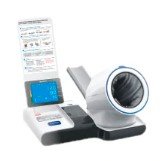Financial Measures in the Medical Lab and Phlebotomy Industry in the US: Hedging Currency Risks and Impact Analysis
Summary
- Financial measures in the medical lab and phlebotomy industry in the US
- Hedging strategies to mitigate currency risks
- Impact of currency fluctuations on the healthcare sector
Introduction
As the healthcare industry in the United States continues to evolve and grow, medical laboratories and phlebotomy services play a crucial role in providing accurate diagnostic testing and blood collection services. However, just like any other business, these organizations are exposed to various risks, including currency fluctuations. In this article, we will explore the financial measures typically employed by medical laboratories and phlebotomy services in the US to mitigate risks associated with currency fluctuations.
Financial Measures in the Medical Lab and Phlebotomy Industry
Medical laboratories and phlebotomy services often deal with international clients, suppliers, or partners, which exposes them to currency risks. To mitigate these risks, these organizations employ several financial measures, such as:
1. Currency Hedging
Currency hedging is a common practice in the healthcare industry to mitigate risks associated with currency fluctuations. Medical laboratories and phlebotomy services can utilize various hedging strategies, such as:
- Forward contracts: By entering into a forward contract, companies can lock in an exchange rate for a future transaction, thereby reducing the impact of currency fluctuations.
- Options contracts: Options contracts provide companies with the right, but not the obligation, to buy or sell a currency at a specified exchange rate. This gives them flexibility in managing currency risks.
- Currency swaps: In a currency swap, two parties exchange principal and interest payments in different currencies to hedge against exchange rate fluctuations.
2. Diversification
Another financial measure employed by medical laboratories and phlebotomy services to mitigate currency risks is diversification. By diversifying their client base or sourcing supplies from multiple countries, these organizations can reduce their exposure to currency fluctuations in a particular market.
3. Monitoring and Analysis
Continuous monitoring and analysis of currency trends and market conditions is essential for medical laboratories and phlebotomy services to identify potential risks and opportunities. By staying informed about macroeconomic factors that influence exchange rates, these organizations can make informed decisions to mitigate currency risks.
Impact of Currency Fluctuations on the Healthcare Sector
Currency fluctuations can have a significant impact on the healthcare sector in the United States. Some of the effects of currency fluctuations include:
- Cost of Imported Medical Supplies: Medical laboratories and phlebotomy services that rely on imported medical supplies may face increased costs due to a weakened domestic currency. This can lead to higher operating expenses and reduced profitability.
- Revenue from International Clients: Healthcare organizations that provide services to international clients may experience fluctuations in revenue when the local currency depreciates. Currency hedging can help mitigate the impact of these fluctuations.
- Investment in Research and Development: Currency fluctuations can impact the ability of healthcare organizations to invest in research and development projects. A strong domestic currency may make it more expensive to fund innovation, while a weak currency can pose challenges in sourcing funding from international investors.
Conclusion
Financial measures such as currency hedging, diversification, and monitoring play a crucial role in helping medical laboratories and phlebotomy services in the United States mitigate risks associated with currency fluctuations. By implementing these strategies and staying informed about market conditions, healthcare organizations can safeguard their financial stability and focus on providing quality services to their patients.

Disclaimer: The content provided on this blog is for informational purposes only, reflecting the personal opinions and insights of the author(s) on the topics. The information provided should not be used for diagnosing or treating a health problem or disease, and those seeking personal medical advice should consult with a licensed physician. Always seek the advice of your doctor or other qualified health provider regarding a medical condition. Never disregard professional medical advice or delay in seeking it because of something you have read on this website. If you think you may have a medical emergency, call 911 or go to the nearest emergency room immediately. No physician-patient relationship is created by this web site or its use. No contributors to this web site make any representations, express or implied, with respect to the information provided herein or to its use. While we strive to share accurate and up-to-date information, we cannot guarantee the completeness, reliability, or accuracy of the content. The blog may also include links to external websites and resources for the convenience of our readers. Please note that linking to other sites does not imply endorsement of their content, practices, or services by us. Readers should use their discretion and judgment while exploring any external links and resources mentioned on this blog.
